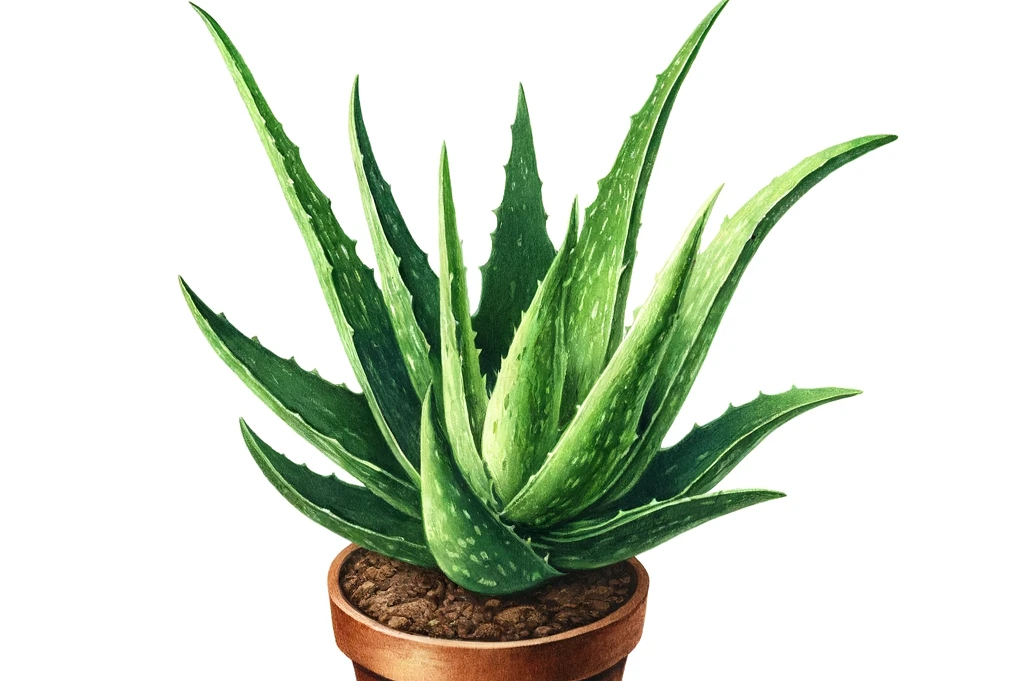Green lily

In the world of houseplants, the green lily (Chlorophytum comosum) often stands out for its undemanding nature and air-purifying properties. But what about this popular plant when four-legged family members come into play? This article looks at the green lily in all its facets, sheds light on what makes it so special and goes into detail about the advantages and disadvantages it has for dogs. A well-founded examination for all those who want to make their furry friends' homes both beautiful and safe.
What is the green lily?
The green lily, known by its botanical name Chlorophytum comosum, is a robust houseplant known for its long, green leaves with characteristic white stripes. Originally from the tropical and subtropical regions of Africa, it has established itself in households worldwide. Its reputation as an air purifier - it effectively filters pollutants such as formaldehyde from the air - and its low-maintenance nature make it a popular greenery in homes and offices.
Benefits of the green lily for dogs
Non-toxic
A major advantage of the green lily is its non-toxicity to dogs. Unlike many other houseplants, the green lily poses no risk of poisoning if nibbled on by curious four-legged friends. This makes it an ideal choice for households where the safety of animal roommates is paramount.
Air-purifying properties
The green lily's ability to purify the air of pollutants benefits not only the human inhabitants, but also the dogs. Cleaner air can contribute to overall health, especially for dogs with respiratory sensitivities.
Disadvantages and precautions
Risk of overeating
Although green lily is non-toxic, care should be taken to ensure that dogs do not eat too much of it. Overeating can lead to gastrointestinal problems, including nausea, vomiting or diarrhea. It is advisable to place plants out of reach of dogs to avoid excessive nibbling.
Allergic reactions
Rarely, dogs can have allergic reactions to plants, including green lily. Although this is uncommon, it is important to look out for signs of an allergic reaction such as skin rashes or breathing difficulties, especially if the plant is new to the household.
The green lily proves to be an excellent choice for households with dogs, thanks to its non-toxic nature and air-purifying abilities. It offers a worry-free way to bring greenery into your home without jeopardizing the health of your furry family members. While it's important to avoid excessive nibbling and watch out for potential allergic reactions, the benefits of green lily clearly outweigh the risks. With proper placement and occasional monitoring, green lily can be a safe and healthy addition to dog owners' homes.
If you notice any signs of hypersensitivity or poisoning in your dog, you should see your vet immediately. We are not a substitute for a vet, but we try to be as accurate as possible. Every dog reacts differently and we recommend you get a second opinion or consult your vet if in doubt.
Stay healthy and take good care of your four-legged friend!😊
Similar to Green lily
Dragon tree contains saponins, secondary plant substances that are found in many plants. Saponins have a soap-like effect and foam up when they come into contact with water. They protect the plant...
Sword ferns belong to the Nephrolepidaceae family and are widely used houseplants due to their easy-care nature and ability to improve air quality. They are characterized by long, feathery fronds...
Zamioculcas zamiifolia, colloquially known as the ZZ plant, is a tropical evergreen plant originally from the dry grassland and forest regions of Africa. It is characterized by its glossy, waxy...
Aloe vera is a succulent plant that belongs to the lily family. It has long, thick, fleshy leaves with spines on the edges. A gel or juice containing many valuable ingredients can be extracted from...



